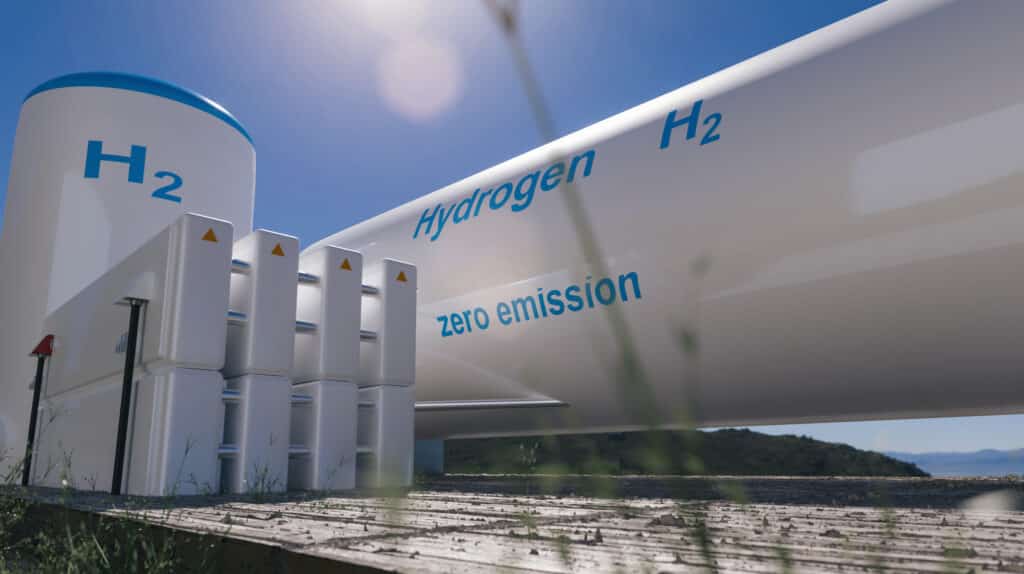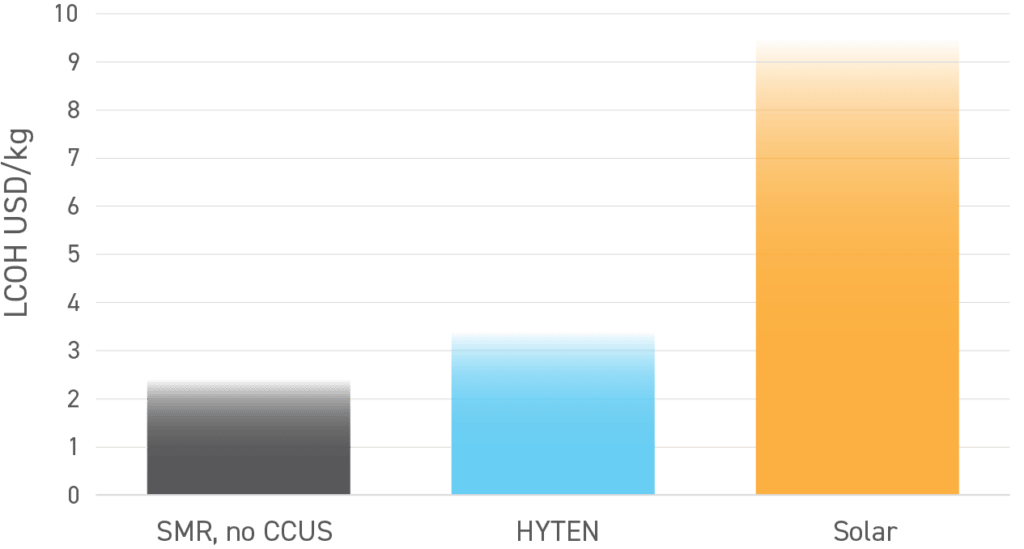
Waste Heat to Zero Emission Hydrogen
HYTEN OVERVIEW
The HYTEN technology (patent pending) is a waste heat to hydrogen production system. Industrial waste heat is captured and exploited to generate low-cost, zero emission electricity that powers a water electrolyser to produce hydrogen fuel gas.
The establishment of a technically & commercially viable hydrogen transition market requires low-risk & low-cost hydrogen production technologies that encourage existing energy market supply and demand participants to productively engage the hydrocarbon / hydrogen energy transition.
Existing energy market supply & demand participants own significant energy infrastructure that vents a large waste heat footprint to atmosphere.
The HYTEN System has the potential to exploit this waste heat resource to produce zero incremental emission hydrogen at up to a ~70% lower cost than unsubsidised Green Hydrogen produced by solar / wind generated electricity.
Critically, these waste heat resource locations can utilise the zero-emission hydrogen produced by HYTEN to displace fossil fuel use at that same site location. This circumstance eliminates the requirement for new safe and viable transport and storage technologies for hydrogen between alternative supply and demand locations.

THE HYTEN SYSTEM
The HYTEN System design comprises two proven and well established primary sub-system solutions:
- The ATEN waste heat recovery and thermal oil sub-system (Waste Heat Recovery Package); and
- The ATEN organic rankine cycle and power generation sub-system including modular air-cooled or water-cooled condenser (ORC Package); and
- An alkaline water electrolyser and hydrogen separation system (Electrolyser Package).
Simply put, the HYTEN System incorporates the VOLT ATEN – waste heat to power technology – integrated with an alkaline water electrolyser to produce zero emission hydrogen.
THE HYTEN FLOWSHEET
The simple flowsheet diagram provides a high-level overview of the electrolyser sub-system (including battery limits) that, combined with the ATEN Waste Heat to Power solution, comprises the complete HYTEN Technology.

THE HYTEN ADVANTAGE
HYTEN has key advantages and the potential to produce zero emission hydrogen fuel gas for a ~70% lower CAPEX and ~60 – 80% lower lifecycle cost compared to Solar & Wind Green Hydrogen systems.
THE HYTEN COST CONTEXT
Levelised Cost of Hydrogen (LCOH*) Technology Comparison (equiv. annual H₂ production)

SMR – Steam Methane Reforming with no carbon capture (CCUS), utilisation & storage. Costs from IEA Global Hydrogen Review 2022
HYTEN – Waste Heat to Hydrogen based on an LM6000 OCGT waste heat resource and detailed feasibility study and including OEM verified OPEX and CAPEX+ 30% Remote Site uplift and 95% operational duty performance
Solar Hydrogen – Green Hydrogen costs from IEA Global Hydrogen Review 2022
*LCOH based on ARENA calculation methodology using 5% discount rate, A$35/REC, A$30/ACCU where relevant
The HYTEN Technology is competitively advantaged and capable of a Levelised Cost of Hydrogen (LCOH) at the H₂ Cost Target due to the following performance capabilities and characteristics:
THE HYTEN MARKET OPPORTUNITY
Global governments have developed zero emission Hydrogen growth strategies and policy to support new technologies that produce zero emission hydrogen for less than US$2/kg (H2 Cost Target).
The strategic commercial rationale for HYTEN Technology’s design development is based on the increasingly urgent movement to decarbonize the global economy. Governments across the world are introducing carbon reporting and carbon-based financial incentives / penalties to encourage industry transition from hydrocarbon fuels to zero carbon emission fuels.
The HYTEN Technology (patent pending) provides a significant, low-cost transitional technology pathway option to achieve initial zero emission hydrogen production below the H2 Cost Target, when deployed at existing gas processing, power generation and other energy intensive industrial facilities. Working collaboratively with existing energy industry will deliver an accelerated and lowest-cost transition.
In contrast, existing “renewable energy” hydrogen production systems (solar & wind) cannot achieve the H₂ Cost Target without significant public funding support.
In VOLT’s home market, the Australian Government’s National Hydrogen Strategy (NHS) aims for Australia to become a “Global Hydrogen Leader.” The NHS’ primary objective is to create a significant Australian based hydrogen production capability, that can produce zero emission hydrogen (H₂) for ~$2/kg (H₂ Cost Target), to displace hydrocarbon fuel use.
To encourage industry uptake of hydrogen fuel use requires a rational, reliable, low-cost hydrogen production and supply system to encourage demand and supply side industry investment & uptake.
A hydrogen-based energy industry, as advocated by the NHS, has encouraged the following existing industries that generate significant waste heat to advance new infrastructure initiatives including:
- Oil & natural gas industry to introduce gas pipeline hydrogen blending (up to 5-10% initially);
- Extractive industries to displace diesel in heavy train, haul truck and other equipment with combined hydrogen fuel cell and battery stored energy technologies; and
- Chemical industries that have energy or hydrogen feedstock requirements (ammonia, urea etc.) to explore zero emission hydrogen supply options.
THE HYTEN APPLICATIONS
Numerous industrial scale operations worldwide generate a significant waste heat resource, currently vented to the atmosphere, including:
- Pipeline compressor stations (facilitating hydrogen / natural gas pipeline blending at each pipeline compressor station)
- Onshore LNG and domestic gas supply facilities (waste heat to hydrogen and transmission pipeline blending)
- Extractive industry power generation (resource sector site hydrogen production potential)
- Industrial aluminium & steel smelters
- Downstream lithium processing and existing chemical industry facilities (i.e.: ammonia production)
Primary Targets exist across Australia, with the potential to utilise HYTEN produced zero emission hydrogen to displace hydrocarbon fuels used as energy feedstock and for pipeline injection blending (H₂ Supply/Demand Sites). Significant storage and transport infrastructure investment, necessary to present hydrogen to export or domestic markets in other locations, is eliminated.
Existing critical hydrocarbon and industrial infrastructure can become a reliable, transitional source of low cost, zero emission hydrogen production without incremental scope 1 emission production, greatly assisting initial energy transition execution.
H₂ Supply/Demand Sites represent a high-value commercial opportunity for the H₂ Supply/Demand Sites owners, particularly where HYTEN can achieve the H₂ Cost Target.
Where the H₂ Cost Target can be achieved, the value potential of HYTEN to decarbonize Australian domestic industries, from power generation to steel manufacturing, is compelling.